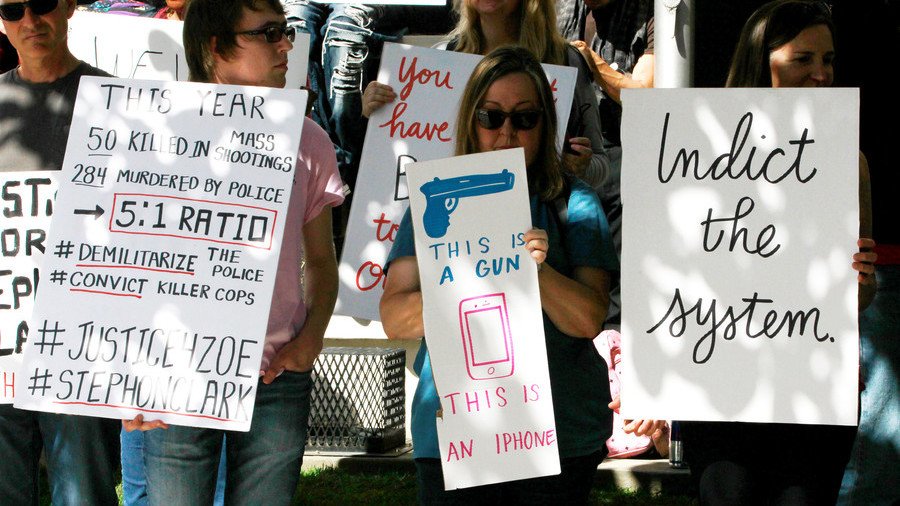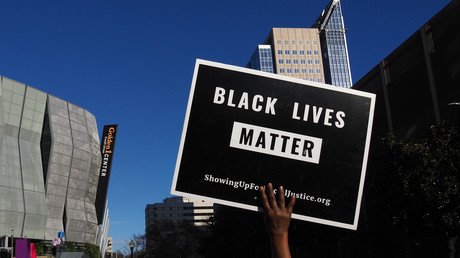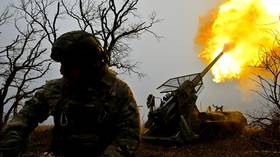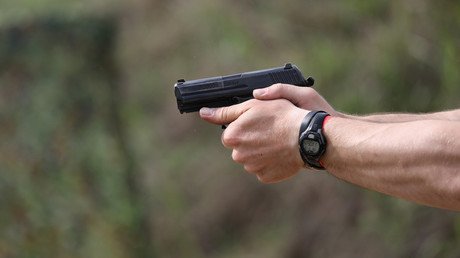California cops shoot down bill restricting lethal force

California law enforcement organizations say they won’t budge on a bill that would limit the situations in which they can use lethal force.
Assembly Bill 931 would raise the standard for the use of lethal force from ‘reasonable’ to ‘necessary.’ If it were to pass, police officers could only kill a suspect if all other options were exhausted.
While the bill passed its first policy committee on Tuesday, police opposition could obstruct its passage through the state’s legislature. The Peace Officers Research Association of California (PORAC), which represents rank-and-file police officers in the state, called the bill "reactionary legislation" that will "handcuff peace officers and their abilities to keep communities safe."
The current standard, under which an officer can kill a suspect if a ‘reasonable’ officer in similar circumstances would have done the same, is based on a Supreme Court ruling from three decades ago. Bill 931 was introduced in response to the shooting of Stephon Clark in Sacramento in March.
Clark, a 22-year-old black man, was shot 20 times in his grandparents’ back yard while holding his cell phone. Police had mistaken him for a burglar active in the area, and opened fire seconds after asking him to show his hands.
Democrats who brought the bill to the floor consider that restricting police officers’ ability to kill is necessary to address a problem of racism in policing.
"It always blows me away when law enforcement fear for their life only when they're facing black and brown people," Sen. Steve Bradford said. "It blows me away me when black and brown men and women don't even get to the jail. They don't even get a chance to be arrested."
However, police say the bill interferes with their already difficult job of making life-or-death decisions on the fly, and in doing so, places the public at greater risk.
“Use-of-force incidents occur quickly, and while we have always supported greater training and body cameras, this legislation takes a dangerous new step,” read a statement from PORAC. “The legislation will require officers in every rapidly advancing, extraordinarily dangerous situation to employ a checklist that ultimately places everyone at risk.”
According to a 2011 study, an armed suspect with his gun drawn can squeeze off the first shot at an officer in less than half a second. “The process of perceiving the suspect’s movement, interpreting the action, deciding on a response, and executing the response for the officer generally took longer than it took the suspect to execute the action of shooting, even though the officer already had his gun aimed at the suspect,” the study found.
PORAC also cites the financial cost of retraining some 100,000 California police officers as reason for its opposition, an argument that was rubbished by Democrat Senator Holly Mitchell, who argued that the money could be easily found.
When "law enforcement makes it a priority, we find a way," said Mitchell.
On the same day that Bill 931 passed its first committee hearing, police in Pittsburgh, Pennsylvania shot and killed an unarmed teenager, 17-year-old Antwon Rose.
Rose was pulled over in a car matching the description of a vehicle involved in an earlier shooting, and fled on foot. A police officer opened fire and hit Rose three times in the back. Two firearms were found in the car, but Rose was unarmed as he fled the scene. He was taken to hospital and pronounced dead on arrival.
If you like this story, share it with a friend!















